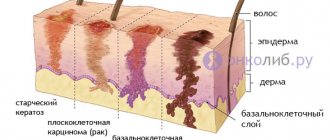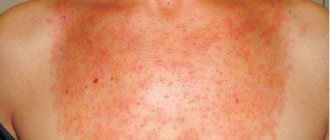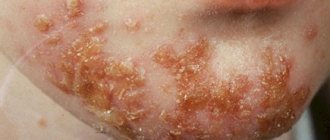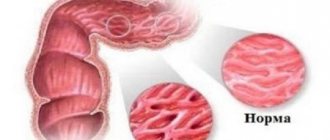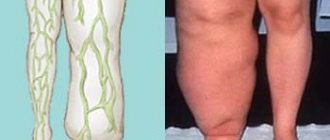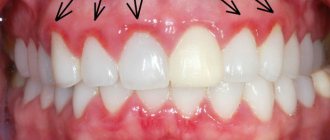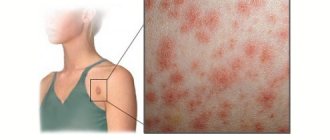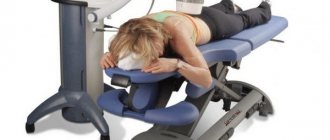What is vitamin deficiency? Causes of vitamin deficiency
Answering the question of what vitamin deficiency is, experts unequivocally say it is a disease. After all, a lack of vitamins in the body leads to a deterioration in overall health. This is manifested by external and internal signs.
Like any other disease, vitamin deficiency has its own causes, symptoms, stages of development and, of course, treatment.
Initially, the phrase “vitamin deficiency” evokes an association with the winter-spring season. Many people think that this disease is mainly associated with a lack of fresh vegetables and fruits during this period. The correctness of this statement must be recognized. However, it is necessary to clarify: vitamin deficiency can develop at other times of the year, and at the end of winter it worsens. After all, there are several causes of the disease:
- Poor diet/strict diets;
- Pathology of internal systems and organs;
- Bad habits;
- Wrong regime and lifestyle.
The first of these reasons is due to the fact that a person does not receive enough vitamins from his diet. Other factors lead to deviations in the body’s activity, as a result of which microelements and vitamins are quickly destroyed or poorly absorbed over a long period of time.
Hypo- and vitamin deficiency B 1
With hypo- and avitaminosis B, a violation of the simple and oxidative decarboxylation of pyruvic and α-ketoglutaric acids occurs in the body, a violation of the pentose phosphate cycle of glucose oxidation occurs, and therefore the functions of the nervous system are disrupted - Beriberi disease develops.
Clinical signs and symptoms.
The edematous form of the disease occurs in young children and is manifested by swelling, spasms and convulsions. In older children, a dry form of the disease develops with poor sleep, increased fatigue and lethargy, pain along the nerves, suppression of tendon reflexes and loss of sensitivity, with decreased muscle tone (characteristic symptoms of a dangling head, ptosis, enlarged abdomen). There is a loss of coordination, paresthesia, tingling and “burning” in the fingers and toes, in the palms and feet. Malnutrition and anemia, cardiovascular failure, convulsions and coma develop (death may suddenly occur). A clinical blood test is characterized by the presence of anemia; albuminuria and cylindruria are observed in urine analysis.
Eye signs.
The severity of pathological changes in the cornea is associated with the degree of disruption of its sensitive and sympathetic innervation. In the early stages of the development of this disease, opacities appear in the central parts of the cornea. Disc-shaped keratitis with extensive tissue disintegration and weakly expressed vascularization of the cornea occurs when a herpesvirus infection is associated with the dystrophic process. It is possible to develop a circular abscess of the cornea with subsequent perforation.
The course of this pathological process is slow and long-term, sometimes accompanied by involvement of the choroid and optic nerve (retrobulbar neuritis often develops).
With polyneuritis caused by hypovitaminosis B1, paresis and paralysis of the extraocular muscles of the eye may occur.
Distinctive signs of vitamin deficiency
Unfortunately, it is not possible to diagnose vitamin deficiency immediately, since its initial period is secretive. A person feels drowsiness, apathy, loss of ability to work, and irritability. Further, a lack of vitamins will certainly not have the best effect on your appearance.
The epidermis is especially susceptible to the negative manifestations of vitamin deficiency. This largest human organ by area performs many vital functions. For his health and normal functioning, it is necessary to receive a large amount of vitamins. It is these compounds that are responsible for the water-fat balance, the course of regeneration processes in the skin, its respiration and blood supply.
The distinctive signs of the disease are quite extensive and varied. They can present with internal and external manifestations ranging from dandruff and hair loss, acne and cracked skin, to brittle bones and blindness. The fact is that sometimes the body lacks one vitamin, and sometimes there is a deficiency of several vitamin components at once.
Therefore, if the skin has become dry, with an unhealthy tint, inflammation has appeared, and all this occurs against the background of emotional disruptions, you need to consult a doctor.
Symptoms in children and adults
Only a therapist can diagnose vitamin deficiency.
Based on the test results and presenting symptoms, he will determine which microelement is missing in the patient’s body. Signs of vitamin deficiency include the following:
- Decreased appetite;
- Lethargy and decreased activity;
- Tearfulness;
- Dry lips and cracks in the corners of the mouth;
- Rash on the body.
These are the first symptoms. Further, the lack of a certain vitamin in the baby’s body can cause much more serious deviations:
- Vitamin K deficiency is accompanied by nosebleeds and bruises all over the body;
- A lack of vitamin D will manifest itself as problems with bones and joints, the development of rickets;
- A lack of ascorbic acid (vitamin C) will lead to the destruction of teeth and gums, the formation of ulcers on the body and long-healing wounds;
- If there are few B vitamins , then the child looks weak, lethargic, dermatitis, weight loss, and lack of coordination may be observed;
- An insufficient number of RR compounds at an early age is characterized by rapid fatigue.
Complex forms with a deficiency of several vitamins can provoke cramps, muscle atrophy, mental disorders, and suppression of reflexes.
In adults, increased fatigue and drowsiness do not immediately cause anxiety; they easily explain these symptoms by chronic fatigue, the rhythm of life and daily workload.
However, there are persistent symptoms of this disease in adults:
- Migraines and insomnia;
- Bleeding gums;
- Dry mouth, decreased appetite;
- Mood swings;
- Bone pain;
- Problems with skin and hair.
Certain signs in women
Especially women think about the seriousness of the disease later, when visible signs appear:
- brittle nails,
- increased dryness of the epidermis,
- early wrinkles,
- loss of a large amount of hair.
It is good when these phenomena are temporary. What to do if the symptoms do not go away and the situation gets worse? This should under no circumstances be expected. Because in both children and adults, an advanced form of vitamin deficiency leads to serious consequences.
Lose weight without denying yourself your favorite foods! Eat and lose weight! Find out how!
>>
How to treat vitamin deficiency
Treatment of vitamin deficiency depends on the severity and type of vitamin deficiency. Only a doctor can determine which nutrients are missing by conducting an appropriate examination.
Short-term shortages caused by seasonality or poor nutrition quickly disappear when you take the missing vitamin preparations or adjust your diet.
It may be necessary to consult a nutritionist who will give recommendations on nutrition.
In some cases, supplements and multivitamins may be necessary. The frequency and dosage will depend on how severe the degree of vitamin deficiency is. Prescribed by a doctor or nutritionist.
In severe cases, when the body does not respond to oral supplements, drugs may be administered intravenously or intramuscularly.
In any case, if symptoms of vitamin deficiency are detected, you should consult a doctor. Self-medication can lead to hypervitaminosis. It is no less dangerous than hypovitaminosis.
Types of vitamin deficiency and their characteristic manifestations on the skin
Based on what problems have appeared with the skin, it is possible to determine which vitamin in the body has decreased to a critical point. It is on this basis that the types of vitamin deficiency are distributed:
- With a deficiency of vitamin “A” throughout the body, especially on the thighs and forearms, the epidermis becomes covered with “goose bumps”; doctors call this manifestation follicular hyperkeratosis. Increased pigmentation is noted, the color of the skin becomes uneven and dull. The lack of this vitamin provokes the development of “night blindness” - a significant decrease in vision in the dark;
- When there is a lack of vitamin E , multiple small wrinkles appear on the skin and especially on the hands, the skin becomes like parchment, cracks appear on the fingers and palms, all this is accompanied by itching. Vitamin deficiency caused by the loss of this “beauty vitamin” is accompanied by rapid aging;
- With a lack of vitamins B2 and B12, swelling and inflammatory redness appear on the face, spider veins, pimples and rosacea appear. Both men and women can develop stretch marks on their skin. Vitamins of this group are responsible for the production of sebum, and the lack of these compounds provokes increased production of glandular secretions. Consequently, the epidermis becomes oily and the pores on it expand;
- Vitamin C deficiency recognized by the condition of the lips: their elasticity decreases, cracks appear on them, which can constantly bleed and cause severe pain. Scurvy may develop, accompanied by tooth loss and bleeding gums;
- When vitamin PP is not delivered , the following skin diseases may occur: dermatitis, photodermatosis, edema;
- The cause of the skin disease psoriasis still remains unclear. to believe that this disease is caused by a lack of vitamin D. In addition, a decrease in the level of this compound is characterized by constant itching of the skin and a feeling of tightness.
Vitamin deficiency caused by a lack of several vitamins at once “looks” much more deplorable.
When there is a lack of antioxidants that protect the skin from exposure to ultraviolet radiation and oxidation processes, the epidermis is susceptible to early aging and becomes covered with large brown spots. And all visible skin problems occur against the background of serious internal diseases:
- Nervous disorders;
- Exacerbations of gastritis;
- Fragility of blood vessels;
- Hypochromic anemia;
- Decreased immunity.
Seasonal vitamin deficiency
It is at the end of winter - beginning of spring that avitaminosis worsens. People susceptible to this disease during the off-season often complain of unreasonable irritability, loss of strength, and drowsiness. It becomes difficult for them to cope with their usual work.
This vitamin deficiency also has visual signs:
- Nails become thinner and break;
- Hair becomes dull, falls out, splits;
- Lips are cracking;
- The skin dries and peels.
If such symptoms appear in early spring, you should immediately consult a doctor, since it is at this time that the development of this disease is fraught with serious consequences.
The causes of spring vitamin deficiency include the following facts:
- In winter, the diet contains the least amount of natural vitamins and microelements obtained from fresh herbs, fruits, berries, and vegetables. These products are available for sale all year round, but in the middle zone they are mainly subject to long-term storage and lose useful substances;
- During this period, colds and exacerbation of chronic diseases are common. Medicines used to treat such diseases negatively affect the absorption of vitamin compounds;
- Doctors note that in the spring there is an increase in the number of gastrointestinal tract diseases. And this is accompanied by impaired absorption of vitamins.
Hypo- and vitamin deficiency B 2
The development of pathological symptoms is associated with a deficiency of many enzymes involved in the complex process of tissue respiration and protein synthesis (hydrogen transport, phenylalanine utilization, etc. are impaired), resulting in disorders of the central nervous system.
Clinical signs signs.
Characterized by depression and hysteria, hypomanic states and hypochondria. Then stomatitis and glossitis develop, pockets appear in the corners of the mouth, and the lips become bluish and “striated.” The occurrence of diarrhea syndrome is characteristic. Anemia and malnutrition with growth retardation develop.
Eye signs.
Progressive bilateral cataracts may develop. In severe forms of vitamin B2 deficiency and severe starvation, the development of congestive optic discs with corresponding visual impairments is possible - the so-called “camp eye” syndrome develops.
When there is a deficiency of folic acid and riboflavin in the body, a syndrome clinically similar to Sjogren's syndrome develops.
The diagnosis is confirmed by laboratory tests - a decrease in riboflavin content is determined in the blood serum.
Stages of the disease
Experts divide this disease into 3 stages:
Lose weight without denying yourself your favorite foods! Eat and lose weight! Find out how! >>
- Initial or subnormal provision. Vitamins are delivered to the body in minimal quantities;
- Hypovitaminosis. The content of one or more vitamins necessary for the normal functioning of systems and organs is pathologically reduced;
- Avitaminosis. A complete absence of the vitamin compound in the body is recorded. At this stage, significant changes and disturbances in a person’s appearance are observed.
Hypo- and avitaminosis B 3 (PP)
Almost all metabolic processes are disrupted, since nicotinic acid cofactors are part of a huge number of different dehydrogenases. Nicotinamide deficiency leads to disruption of tissue respiration, since it is contained in nicotinamide adenine dinucleotide and nicotinamide adenine dinucleotide phosphate.
Clinical signs and symptoms.
Pellagra develops with dermatitis, diarrhea and dementia characteristic of this condition. There is loss of appetite and progressive weakness with memory impairment and impaired thinking. Headache, vomiting and diarrhea, dry mouth, often stomatitis and soreness of the tongue occur (hypertrophied papillae appear on the tongue, which subsequently atrophy with the appearance of cracks and tooth marks on the tongue). The skin becomes dry and pigmented with symptoms of hyperkeratosis. On parts of the body exposed to sunlight, erythema appears, followed by brownish-brown pigmentation. Subsequently, peeling of the skin occurs and areas either with intense pigmentation or without pigmentation appear.
Eye signs.
Desquamation keratitis with mildly expressed vascularization occurs on the cornea, and in more severe cases, deep keratitis with ulceration and subsequent formation of a cataract. The optic nerves are affected by the type of bilateral chronic retrobulbar neuritis (this is due to a violation of the trophism of the nervous tissue) with a slow decrease in visual acuity due to the appearance of central scotomas. Macular degenerative changes may develop.
Photo of manifestations of vitamin deficiency (on the face, hands of a child and an adult, skin)
Several photographs showing the symptoms of vitamin deficiency on the human body.
Hypo- and vitamin deficiency D
Damage to the organ of vision is observed in childhood with insufficient solar or ultraviolet irradiation (vitamin D is formed from provitamin under the influence of ultraviolet rays).
Clinical signs and symptoms.
Characterized by curvature of the tubular bones, late closure of the fontanelles, and tetany.
Eye signs.
Exophthalmos, frequent blepharospasm, lacrimation, photophobia are observed, and zonular cataract develops.
Blepharospasm and lacrimation regress with treatment, but the cataract remains.
Vitamin D
It is very important to understand that with a lack of vitamin D, a variety of forms of hypovitaminosis can develop.
In this case, bone fragility is observed, since this component performs the construction function of bone tissue, because it is responsible for the calcium content.
Deficiency can provoke depression and emotional stress.
Muscle and head pain may be felt. Moreover, this type of vitamin deficiency often manifests itself as problems with the gastrointestinal tract.
The person may feel nauseous, suffer from diarrhea and loss of appetite. A dangerous manifestation is osteoporosis, which is quite difficult to treat.
Insomnia and weight loss are also symptoms of vitamin D deficiency. This component is synthesized in the body. This is facilitated by eating fish, dairy products and exposure to the sun. Thanks to ultraviolet rays, such a vital substance is produced. This fact is very important to consider when treating vitamin deficiency.
Consumer Reviews
Lacrimosa7002 (otzovik.com)
“Literally for a couple of months I didn’t know about this La-Cri cream for dry skin. It all started when the pads on my sister’s fingers began to burst and peel a little, and the skin was peeled off in a thin film. There was no burning or itching. We immediately went to the dermatologist, my sister was in a panic: save me, help me)) The doctor was a sweet old man, like from a Soviet movie, he said: honey, we’ll help, we’ll save your hand with a kiss:)) Everything turned out to be tritely simple - vitamin deficiency. I can only wonder where it comes from, there are always fresh fruits and vegetables at home, no one in the family takes tablet vitamins.
The doctor ordered me to buy La Cree Cream for dry skin at the pharmacy and assured me that everything would be fine in a couple of days. That's how it happened))
And I really liked the cream. Dad especially liked him. He has never worn and does not wear gloves in his life, you will laugh, but he says: I can’t breathe)) Coming home after long parties with Jessica, dad began to smear his hands with this cream. The skin literally immediately becomes soft, redness and roughness are removed. Well, now about the miracle cream. Sold only in pharmacies. It does not contain fragrances or dyes, but at the same time it has a very pleasant aroma, which is present due to oils and other natural ingredients. Eliminates. Saves. Protects.
The cream can be used for children from birth, which means that the conclusion is that it is hypoallergenic. The tube is in a cardboard box, on which everything is described in great detail, accessible, understandable and in simple language, without veiled phrases.
As for the method of application, it’s still more individual, depending on what problem you have. My sister didn’t smear her entire hands, but only her fingertips, she smeared it for three days, about 4-5 times, but very little by little, and indeed after three days the skin was as good as new. To prevent and moisturize/nourish the skin, she smeared it for another five days, but only at night before bed.
Dad also rubs his hands when he has to. In severe frosts it happened twice a day, but now I don’t use it until the thaw. I also tried the cream several times after cleaning, it’s very cool.
...The box is simply a treasure trove of information.
The active components in the composition are described in percentages; it is rare to see such a detailed description. And after the composition, the components themselves, their qualities and effects on the skin are described. Excellent presentation of information, hats off to the manufacturer.
The only one. But a fairly significant disadvantage is the cost of this cream. The volume is 50 ml, and the price is 240 rubles. The date of manufacture is on the weld seam, the shelf life is 2 years. The tube is made of soft plastic, designed identically to the box. This is already the second tube, the first one ran out in a couple of weeks, and was actively used by the whole family. The information is partially duplicated (as much as there is enough space). The font is small, but easy to read.
The box contains large instructions with detailed descriptions of use for various problems.
I won’t even try to add a photo, since everything is mercilessly deleted and cut out, and if you look at others, half the review is just photos of instructions, like, the sword of Damocles didn’t get there. A regular screw-on lid, the hole is closed with a foil membrane.
The hole is small, convenient, if you consider that the cream is thick, then everything is fine. The texture is dense and oily. The aroma is very interesting, I smell the smell of mown grass and wildflowers, although there is no trace of them there, and I am also very glad that the cream does not have a characteristic pharmacy smell. This cream can be applied to any area of the skin, including the face. Despite the consistency and texture, consumption will be economical. When the cream gets on the skin, it seems to melt a little and smear perfectly, while all its fatness is felt, but at first glance it seems terrible, I’m all covered in oil :))
With such oil content, the cream is definitely not suitable for those with oily skin, but this only applies to the face, you will look like an oily pancake))
After using this cream, the skin is transformed before your eyes, it is soft, perfectly moisturized and receives sufficient nutrition.
The only downside I can mention is the cost, it’s still a bit expensive.
Everything else suits me 100%:
- can be used at any age and for any part of the body (including the face)
- good composition
- excellent properties of the cream
- quick solution to problems (in the specific case of vitamin deficiency)
- nice smell
- economical consumption.
READ ALSO: Surgery to remove lipoma - “For almost 30 years it has been a part of me, but it’s time to leave
I give it a definite 5 points and I would advise you to pay attention to this La-Cri cream if you have problems that are listed in the indications for the use of this cream.
Health and good mood to everyone!”
Leli4na (irecommend.ru)
"8 in 1! A composition that includes all the creams that I used separately! Use experience: a week or more. A miracle remedy for all irritations, redness and dermatoses (not in the acute phase. The color is interesting, the smell is specific, the feeling is a fairy tale!
B is for children, and, accordingly, for adults. Excellent composition (see photo), the result is obvious! (And on the body, too)! Perfectly moisturizes the skin, it becomes soft and velvety; The cream is perfectly absorbed without leaving behind a sticky, greasy layer. True, because of the smell, I personally only apply it at night. Before that I used panthenol, then I switched to a more budget-friendly version - dexpanthenol, and then I dabbled in calendula cream.
Conclusion: a little bit of everything, but priorities must be set. La-Cree is in the forefront!
- B.A. Shamov, I.G. Safiullina, A.B. Beshimova, T.B. Shamov, Differential diagnosis of atopic dermatitis, journal of Practical Medicine, 2011 https://cyberleninka.ru/article/v/differentsialnaya-diagnostika-atopicheskogo-dermatita
- Fokina R.A., Atopic dermatitis: stages of development of classification forms, Siberian Medical Journal, 2007 https://cyberleninka.ru/article/v/atopicheskiy-dermatit-etapy-razvitiya-klassifikatsionnyh-form
- A.N. Pampura, A.A. Chuslyaeva, Modern approaches to the treatment of atopic dermatitis in children https://cyberleninka.ru/article/v/sovremennye-podhody-k-terapii-atopicheskogo-dermatita-u-detey
Vitamin and mineral complexes
A dietary supplement containing high doses of these vitamins and additional essential minerals can be purchased at any pharmacy. Among the many brands, the following manufacturers and their pharmaceutical products have proven themselves best as preventive drugs, as well as means for effectively combating spring vitamin deficiency:
- Supradin;
- Alphabet for Cold Season;
- Vitrum;
- Complivit;
- Solgar;
- Superjax;
- Multi-Tabs Immuno Plyuk;
- Duovit;
- Doppel Hertz.
All these vitamin-mineral complexes are similar in composition, differing mainly in price category, taste and preferences for administration (effervescent tablets, coated capsules or drinking syrups). In some cases, the selected dietary supplement may cause allergies and other manifestations of individual intolerance to the drug. In this case, you should consult your doctor about the most rational replacement.
In addition, it is worth considering such conditions as pathologies of the gastrointestinal tract, pregnancy, lactation, and lifestyle activity. To prevent vitamin deficiency, a large amount of vitamins and minerals will be required, so it is better to give preference to a complex containing the highest doses of active substances.
When taking any type of vitamins, you should follow the following rules:
- Dietary supplements are best absorbed when taken in the morning, half an hour after eating;
- Do not take vitamins with drinks containing caffeine and tannin (tea, coffee, even instant). Also, do not drink the drug with soda, juice or compote. Clean water is best;
- Taking vitamins should be regular. The course of treatment and prevention is usually about 1-2 months with daily use of the product;
- It is mandatory to follow the doctor’s instructions and follow the instructions attached to the medicine;
- In order for vitamins to retain their properties for a long time, they must be stored in a dark place at room temperature.
Proper use of dietary supplements in food helps to maximize the release of active substances, their rapid distribution to the necessary organs and tissues and an effective effect on health and weakened immunity.
Vitamin B1
It is no coincidence that all B vitamins are called beauty vitamins. In spring, its deficiency very often occurs.
Signs of vitamin deficiency, in which the body lacks vitamin B1, are as follows:
- pain in the gastrointestinal tract;
- sleep disturbance;
- gagging;
- change in the color of the tongue, which becomes bright red and dry;
- fast fatiguability;
- decreased tendon reflexes;
- visual impairment;
- irritability.
When such vitamin deficiency is detected, treatment should consist of the intake of vitamin B into the body. There are drugs in the form of injections and tablets. In the spring, for the purpose of prevention, you can take special vitamin complexes, which are sold in any pharmacy.
There should be no less than 14.8 mmol/l vitamin B1 in the blood. Otherwise, hypovitaminosis can be diagnosed, which will be accompanied by all the symptoms listed above.
People with liver and gastrointestinal diseases are especially susceptible to this condition. Prevention of vitamin deficiency consists, first of all, in consuming foods rich in this beneficial component.
Among them are the following:
- oatmeal;
- Brewer's yeast;
- regular yeast;
- peanut;
- buckwheat porridge;
- pork meat.
Vitamin B2 is also called riboflavin. This component is extremely important for the development of the fetus during pregnancy.
Its deficiency can affect the development of the fetal neural tube. Vitamin B2 affects immune responses in the body. It is very important to prevent vitamin deficiency of such a substance in people with visual impairments, as this can aggravate the disease.
Sometimes a lack of riboflavin causes stomatitis. The skin may thicken, including in the eyelid area. In children, such vitamin deficiency can cause seizures, since vitamin B2 affects the nervous system.
The concentration of such a substance in the urine should be at least 100 mcg per day.
Prevention of vitamin deficiency involves eating foods rich in this component and taking vitamins orally. It is advisable to include milk, eggs, almonds, baker's yeast, peanuts, and mackerel in your diet.
Vitamin C
This component is very important for maintaining good immunity. If there is a deficiency in the body, this leads to scurvy. In severe cases, the elasticity of blood vessels is lost. This leads to bruising on the body and bleeding gums.
Such manifestations are caused by insufficient collagen content, in the formation of which ascorbic acid is involved. Anemia may develop. In advanced cases, teeth fall out. Vitamin deficiency, accompanied by a lack of ascorbic acid, worsens overall health and slows down thought processes. The person feels lethargic and lack of strength.
If vitamin deficiency is accompanied by a viral infection, it is especially important to compensate for the deficiency of the component. There are special ascorbic acid tablets. A large amount of it is found in citrus fruits, bell peppers, herbs, pineapples, avocados, broccoli, horseradish, and radishes.
Symptoms of spring vitamin deficiency
As a rule, a specialist can easily recognize when a person is really suffering due to a lack of active substances in the body, and not due to destructive processes. Spring vitamin deficiency is determined by the presence of the following symptoms:
- dry, ;
- lethargy, apathy;
- constant irritability, nervousness;
- insufficient;
- appearance and hair;
- frequent bacterial and viral diseases, including skin diseases, provoked by hypothermia;
- small cracks around the mouth;
- disturbances in the processes of digestion and absorption: heartburn, belching, diarrhea, constipation;
- tearfulness;
- constant tearing, redness and fatigue of the eyes;
- sleep disorders;
- swelling of the face, joints, lymph nodes.
If a doctor observes similar symptoms in a patient who contacts him, he asks the patient to undergo several tests to eliminate the risk of developing another, more dangerous pathology.
After this, based on the preferences and physiological characteristics of the patient, he selects a method for restoring a tired body without active nutrients. We recommend reading:
Features of the course of vitamin deficiency in a child
Vitamin deficiency in children can occur for various reasons.
Most often it occurs in premature babies. The child’s gastrointestinal tract is immature; the baby’s body simply does not know how to absorb some vitamins. In this case, it is very important to feed the premature baby with breast milk. If this is not possible, the mixture chosen should be of good quality so that it contains all the necessary vitamins and minerals. Vitamin deficiency can also develop as a result of late introduction of complementary foods. The fact is that after six months of age, a child needs additional nutrition, since mother’s milk can no longer satisfy the needs of the grown body. Vitamin deficiency in newborns may be a consequence of insufficient or unbalanced nutrition of the mother during pregnancy. Transferred viruses and infectious diseases can also be a prerequisite for vitamin deficiency in a baby.
Most often, children in the first year of life are deficient in vitamin D. Its deficiency can cause the development of rickets. The result is curvature of the legs, enlargement of the skull and chest, weakness of the limbs and late independent walking. This can be avoided, because we get vitamin D not from diet, but from sunlight. The vitamin is synthesized in human skin under ultraviolet light. To treat vitamin D deficiency, you need to take your child for more walks in the sun. Moreover, you need to walk in the morning; the vitamin is absorbed only before 11 o’clock in the afternoon. It is not at all necessary to expose your newborn baby to direct sunlight - leave the child in the shade; reflected rays have the same effect.
In most cases, people with signs of vitamin deficiency try to buy a multivitamin complex, which, in their opinion, will protect them from all diseases. However, it is not. Drinking multivitamin complexes without a doctor's prescription is undesirable and even dangerous. After all, an excess of one or another vitamin in the body can also lead to disease. It is best to get tested and consult with a doctor who will prescribe you the necessary medications. In other cases, you can get rid of vitamin deficiency with the help of a balanced, varied, healthy diet. Every day your diet should include cereals, meat, fruits, vegetables, herbs and dairy products. And you need to alternate everything. If today you ate buckwheat, tomorrow you need to add pearl barley to your diet, the day after tomorrow - rice, etc. If today the meat in the diet included beef, tomorrow you need to eat fish, and the day after tomorrow give preference to chicken. This rotation will allow you to achieve variety. To compensate for a deficiency of a certain vitamin, you need to know which foods contain it.
- Vitamin A – carrots, butter, beef liver, egg yolks.
- Vitamin PP - milk and dairy products, green peas, fish, buckwheat, rye bread, fish, pumpkin, tomatoes.
- Vitamin E – vegetable oils, nuts, seeds, beans, grains.
- Vitamin C – citruses, kiwi, sauerkraut, cranberries, sea buckthorn, apples.
- Vitamin B2 – broccoli, cauliflower, spinach, dill, bell pepper.
- Vitamin B1 – wheat bran, buckwheat, beans, peas, soybeans.
- Vitamin D – fish oil, salmon, butter, red caviar, liver.
Knowing about the deficiency of a particular vitamin, you can strengthen your diet with certain foods that will help get rid of the deficiency and defeat vitamin deficiency.
To prevent the development of vitamin deficiency, you need to monitor the quality of your diet. Eat vegetables and fruits in season, accumulate vitamins for the long winter and spring. During the cold season, give preference to nuts and dried fruits. Drink decoctions of medicinal herbs, freeze berries and fruits - when frozen they retain most of the nutrients. Take care of your skin with moisturizing creams and lotions, because dry epidermis is a risk of cracks and open wounds. In addition to nutrition, you need to pay more attention to walks in the fresh air and giving up bad habits. In winter and spring, you can take multivitamin complexes, but only after consulting a doctor. Take care of your body, because its health largely depends on nutrition and your lifestyle.
Ready-made drugs
You can replenish the deficiency of one or another missing vitamin in the body with the help of ready-made vitamin preparations. On pharmacy shelves you can find many products containing vitamins. These can be tablets, capsules, lozenges, powders and other forms of vitamin supplements.
According to many experts, it is necessary to take capsules that do not contain an additional upper shell. This allows for gradual absorption of the constituent substances as they move through the digestive tract.
It is recommended to take vitamin preparations in the morning. During this period, the body adjusts to daily activity. Many vitamins are absorbed only with food, and for this reason it is not recommended to take such products on your own.
It is forbidden to drink milk, carbonated drinks, coffee after taking a tablet (capsule or other). Such drinks do not allow healthy microelements to be absorbed normally. Capsules are taken whole, without chewing.
Systematic intake of ready-made vitamin complexes will help normalize metabolic processes in the body, regenerate damaged cells, and restore normal general well-being.
It is especially important to take vitamins if a person is involved in heavy physical activity or, due to professional work, cannot eat normally, for example, due to lack of time.
Monotherapy
The doctor selects the vitamins necessary for the body, taking into account the results of the diagnostic measures performed, as well as the person’s age, weight, characteristics of the course of vitamin deficiency and the degree of clinical manifestations.
Vitamin A injections are not used during pregnancy
For example, the following vitamins may be used to treat vitamin deficiency:
- vitamin A (intramuscular administration in a daily dosage of 25,000–50,000 IU): contraindications include pregnancy, chronic pathology of the heart and kidneys;
- vitamin B1 (parenteral administration in a daily dosage of 100 mg): to avoid the development of allergic reactions, parenteral administration of other vitamins is not recommended;
- vitamin B2 (intramuscular administration in a daily dosage of 20 mg);
- vitamin B6 (intramuscular administration in a daily dosage of 600 mg);
- vitamin B12 (subcutaneous administration in a daily dosage of 100 mcg);
- vitamin D (oral intake in daily dosage for children - 1500 IU);
- vitamin E (oral intake in daily dosage – 100 mg);
- vitamin K (one-time intramuscular injection - 10 mg, subsequently - 20 mg);
- nicotinamide (oral intake in a daily dosage of 1000 mg): taken for the treatment of pellagra - one of the forms of vitamin deficiency, which is characterized by insufficient nicotinic acid in the body;
- vitamin C (oral intake in a daily dosage of 500 mg).
Polytherapy
In the treatment of vitamin deficiency, multivitamin complexes, which contain several vitamins, are also used. The most popular of them are:
- Pikovit: includes 9 useful microelements that are involved in improving metabolic processes, strengthening bones and teeth (prescribed to both adults and children);
- Duovit: the vitamins included in the complex increase efficiency, energy, and help improve the body’s protective function;
- Vitrum: the drug contains more than 20 useful microelements, which not only help get rid of vitamin deficiency, but also enhance the protective function;
- Centrum: vitamins help improve the condition of the skin and hair, and help strengthen the nervous system.
Traditional medicine recipes for the treatment of vitamin deficiencies
Here are a few traditional medicine recipes that will help cope with spring vitamin deficiency
- Lemon water.
When you have scurvy, you need to drink lemon water and rinse your mouth with it (squeezing the juice of 1 lemon into a glass of water). It is also very useful for this disease to eat lemons, cut into slices and lightly sprinkled with sugar. Other citrus fruits are also very effective - oranges, tangerines, grapefruits. - Infusion of birch leaves.
Pour 100 g of well-washed and crushed young birch leaves into 2 cups of boiling water, leave for 3-4 hours, strain. Drink a glass 2-3 times a day if you are deficient in vitamin C. - Infusion of aspen bark.
Pour 0.5 liters of boiling water over a tablespoon of aspen bark or buds and boil for 10–15 minutes. Leave for 3 hours, wrapped. Drink 1 cup as tea 3 times a day, sweeten with honey. You can use bud tincture with vodka or alcohol. Take 20–40 drops per day. - Infusion of rowan and rosehip.
Pour 200 ml of boiling water over a tablespoon of chopped rose hips and rowan berries and leave for 4 hours. Drink 1/2 glass 3 times a day. - Rowan infusion.
The fruits of mountain ash contain vitamins C, P, carotene, and organic acids. Rowan can be used as a vitamin remedy. Pour two tablespoons of dried rowan berries into a thermos with 0.5 liters of boiling water, leave for 1-2 hours, strain and drink 1/3 cup 3 times a day as a general tonic. - Currant infusion.
Blackcurrant is very rich in vitamin C. To prepare the infusion, pour 2 tablespoons of berries with 2 cups of boiling water and leave for 1 hour. Drink during the day. In spring, you can cut young currant branches, chop them finely, and boil them in water for 7–10 minutes. This decoction should be drunk as tea. - Berry infusion.
Collect rose hips, raspberry, currant and lingonberry leaves in equal proportions. Pour two tablespoons of the crushed mixture into a thermos with 0.5 liters of boiling water in the evening, and in the morning strain and drink 1/2 cup 3-4 times a day as a multivitamin, tonic, anti-inflammatory and diuretic.
Herbal collection.
Mix 3 parts rose hips, 1 part black currant fruits, 3 parts nettle leaves, 3 parts carrot roots. Brew a tablespoon of the collection with 2 cups of boiling water, boil for 10 minutes, leave in a well-sealed container for 4 hours in a cool, dark place, strain. Drink 1/2 glass 3 times a day.- Berry collection.
Rowan (fruit) - 60 g, raspberry (fruit) - 10 g, currant (leaves) - 5 g. Pour 0.5 liters of boiling water over a tablespoon of the mixture, boil for 10 minutes, leave in a tightly sealed container and drink 0.5 cups each 3 times a day. - Needles.
Jam is made from pine needles, washed in cold water, and sugar and tea is drunk with it against scurvy. To prepare a decoction, pour 20–30 g of washed pine needles into 150 ml of water, boil for 20 minutes in winter and 40 minutes in summer. Drink during the day in 2 doses. To prepare an infusion in winter, you need to pour 4 cups of pine needles with 3 cups of cooled boiled water, acidify with 2 teaspoons of diluted medical hydrochloric acid, leave for 3 days in a dark place and strain. Drink 1/2 cup 2 times a day, sweeten to taste. - Vitamin tea.
Vitamin tea: lingonberry fruits – 2 parts, rose hips – 3 parts, nettle leaves – 3 parts. Mix the crushed raw materials well, brew 4 teaspoons of the mixture with a glass of boiling water, leave for 3-4 hours, strain and drink a glass 2-3 times a day. - Viburnum tea.
Vitamin tea made from viburnum fruits has a general strengthening and calming effect. Brew a tablespoon of fruit with a glass of boiling water, leave for 1-2 hours, strain. Drink 1/2 glass 2 times a day. - Medicinal tea (collection).
If you have vitamin deficiency or your body is weakened by the disease, it is recommended to drink medicinal tea. Take equal parts of dried peppermint, oregano, thyme, St. John's wort, inflorescences or unripe raspberries, rowan fruits, black currants (buds, leaves, berries), strawberries (leaves, berries), mix everything, brew like tea and drink a glass 3 times a day.

